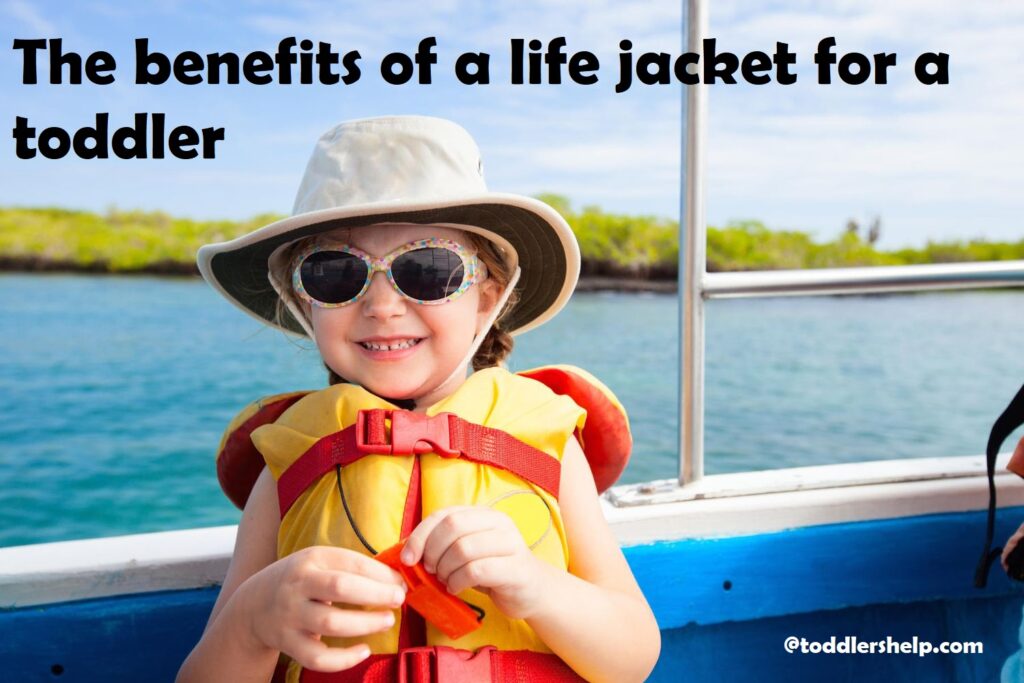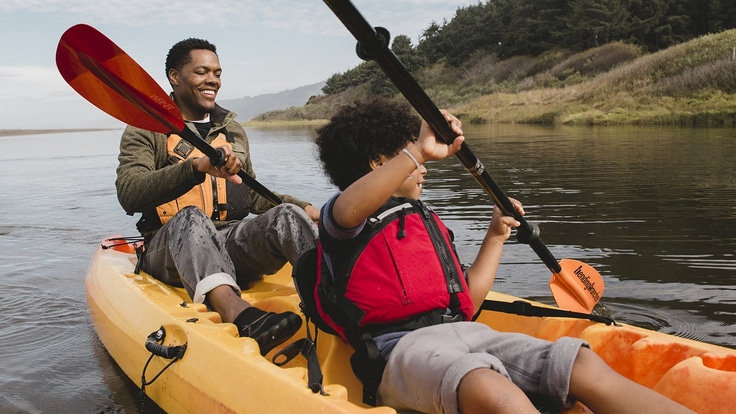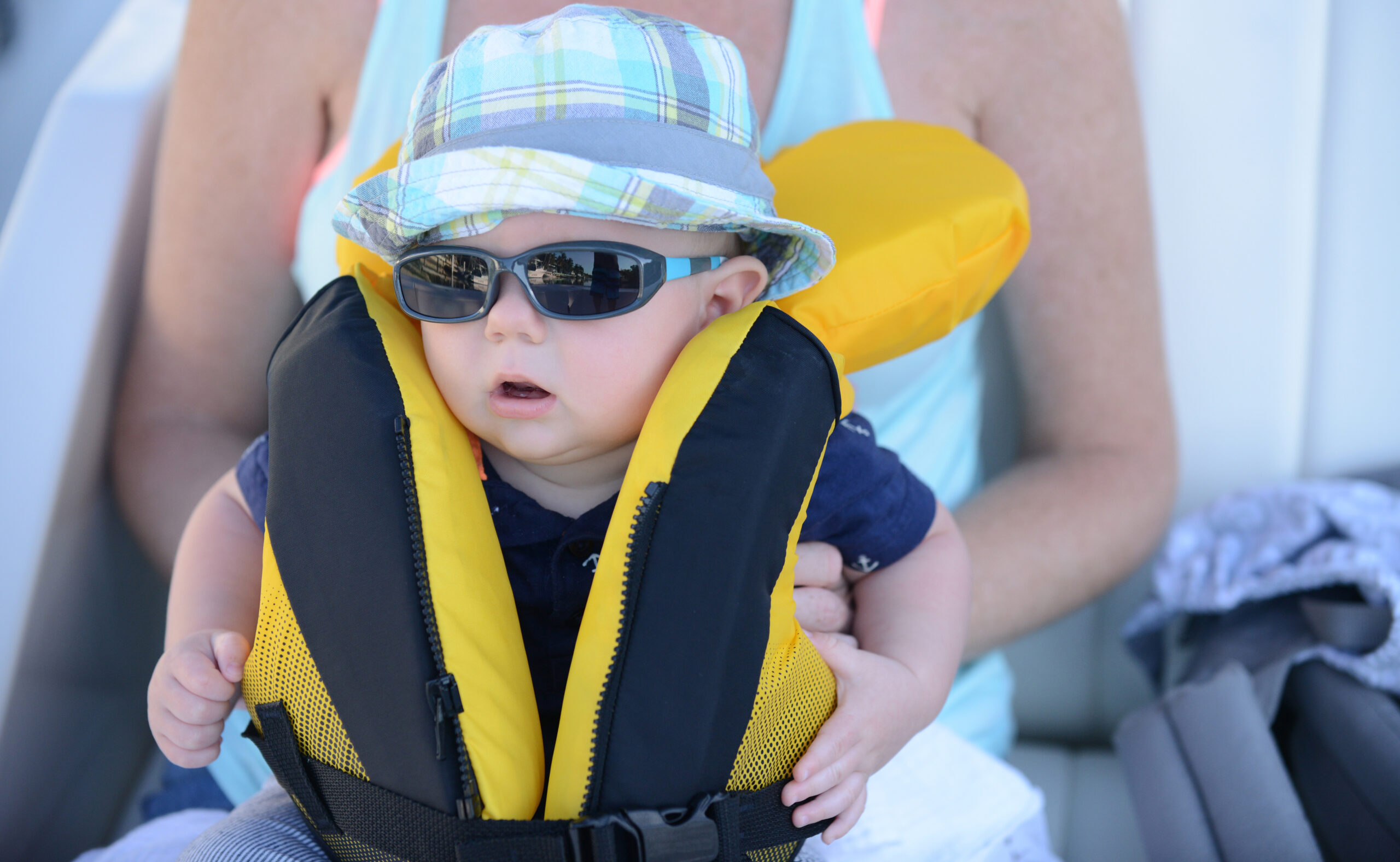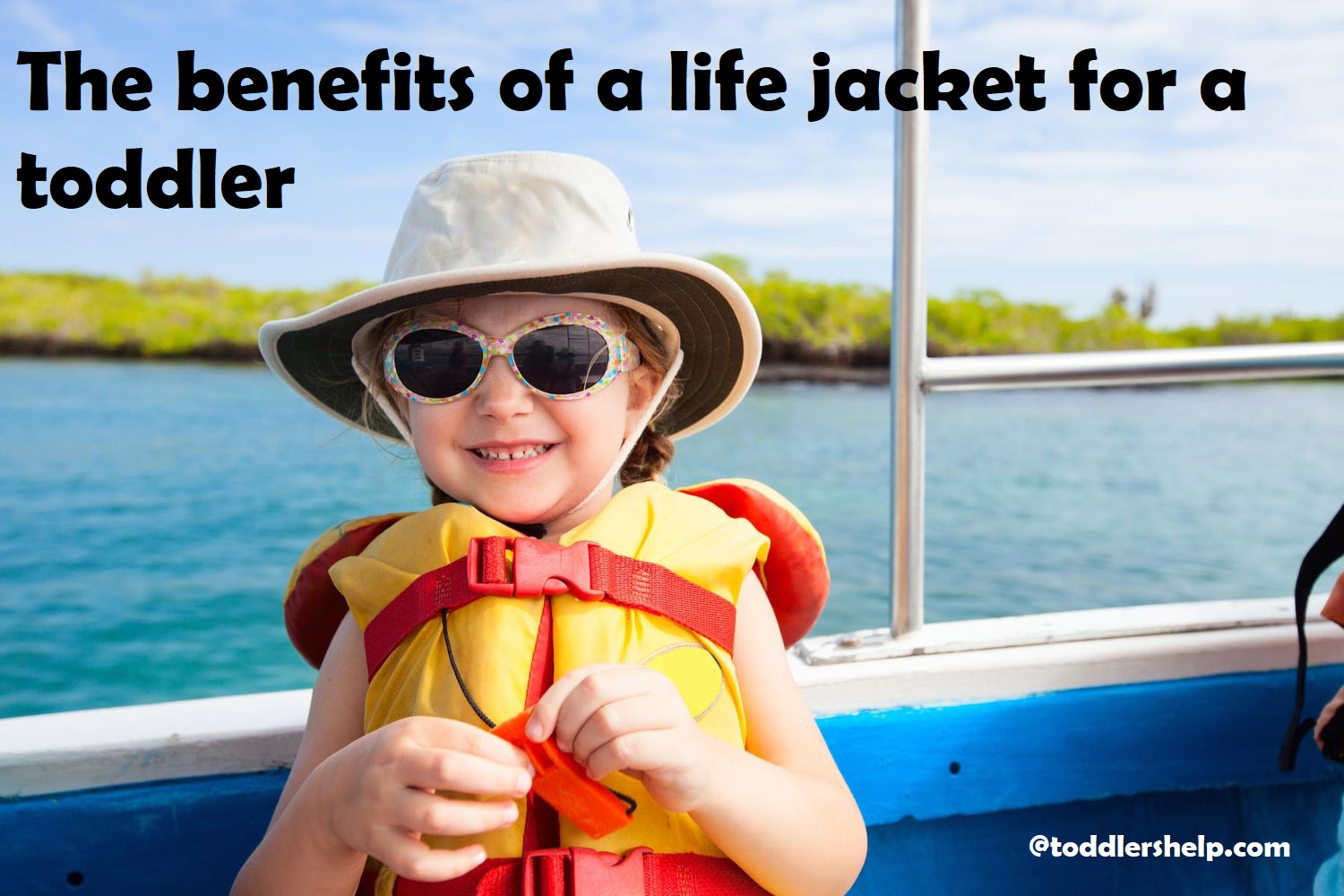Are you worried about your toddler’s safety while swimming? A life jacket is essential for your little one, to avoid any accidental drowning.
Here’s a guide to help you choose the best life jacket for your toddler, and learn its benefits. You can keep your toddler safe while they are in water!
The use of life jackets for toddlers is an important safety measure for any parent or guardian who takes their child out on the water. It is not only a practical requirement but serves as a reassuring piece of mind for parents and guardians when the child has a life jacket on.
The purpose of this guide is to give an introduction to life jackets and discuss the different types available, as well as why it is important for toddler safety when out on the water. We will also give advice about other safety precautions that should be taken and how to ensure that you get the right life jacket size and fit.
Through understanding, readers will be better equipped to provide their toddler with a safe experience while participating in any water activities.
Explanation of the importance of a life jacket for toddlers
A life jacket is a must-have item for any toddler who spends time around water. The U.S Coast Guard has established a series of standards for the use of life jackets by all ages, but it is especially important for toddlers and small children to be fitted with an appropriately sized jacket that conforms to current safety standards. Here’s why:
Toddlers often do not understand what can be dangerous in or near water, or have the strength or coordination to stay afloat when they become tired. Without a life jacket, they could face dangerous and potentially deadly scenarios in the event of unexpected immersion or submersion in water. Wearing a properly fitting, approved Coast Guard life jacket while they are playing around water gives parents peace of mind knowing that their little ones are well protected against drowning accidents.
Further protection can be gained by making sure your toddler wears their life jacket for every activity where there is a risk of going into deep water; this includes activities such as swimming, fishing, boating and other recreational activities that involve being on or near the water at areas such as lakes, rivers and oceans. It’s important to note however that proper parental supervision should always occur whenever your child is around water – no amount of protection from their life jacket will combat careless parenting!
The importance of purchasing an appropriate size and type of Coast Guard approved life jackets cannot be stressed enough; read more below to discover how you can do just this!
Overview of the guide’s contents
This guide provides an overview of the benefits and features of wearing a life jacket when engaging in activities around water with your toddler. It also outlines the types of life jackets that are available, features to consider when purchasing a life jacket, and safety tips to remember when using one.
Additionally, the guide covers information on fitting, wearing and caring for a life jacket properly and provides helpful resources for researching options. Through this guide you will be better informed on how a proper fitting, quality life jacket can keep your little one safe in or near water.
Understanding Life Jackets for Toddlers
It is important to understand the importance of life jackets when it comes to toddlers. Both United States Coast Guard and Transport Canada regulations require that children under six years of age must wear a properly-fitted U.S. Coast Guard approved personal flotation device when underway on a vessel 16 feet and larger, or if on open deck; but outside of this legal requirement, life jackets are important for any child venturing near water, as providing your young one with a secure fit can provide added safety against the risk of drowning while in or around the water.
Understanding the basics is key when selecting a life jacket for your child, such as type and fit; size measurements are also important in ensuring you select an appropriately fitting design so your child can eagerly remain afloat, with comfort and security. To ensure proper fit, all life jackets should have adjustable straps that allow for secure closure across front and back in order to match the particular size of your toddler; for reference, the US Coast guard recommends jackets by age group as follows:
Infants up to 1 year:<30 pounds for up to 30 lbs body weight
Children 1-3 years old: 30–50 pounds
Children 3-5 years old: 50–90 pounds
Additionally size charts can be found on many online marketplaces that offer sizes by chest measurements in inches (in.) In order to determine appropriate sizing take note of these key measurements: Length – Goes from neckline down the midriff all way down to crotch area; Chest Size – Measure both horizontally and vertically around widest part of torso; Waist – Measure circumference at belly button level.
Types of life jackets for toddlers
The right type of life jacket can help protect your toddler in the water. Properly fitting and correctly used life jackets are essential components of a safe recreational boating experience with toddlers. The United States Coast Guard (USCG) recommends that each person on board a boat or personal water craft (PWC) wear an approved USCG life jacket.
The two types of infant/toddler PFDs are classified as either Type I, II, or III PFDs:
Type I: These are best for most open-water activities, like fishing from a boat. They provide the most buoyancy and will turn an unconscious wearer face up in calm waters. Type I PFDs are generally good for extended survival situations, although some designs may require extra buoyancy to keep an unconscious head facing up in rougher waters).
Type II: Offshore life vests offer less flotation than Type I, but are more comfortable when worn for prolonged periods of time. They will turn some unconscious persons face up in calm waters and many offer special features such as pockets and straps to add additional items such as whistle or signaling devices on the vest itself.
Type III: Also known as flotation aids or children’s swim aids, Type III rated vests provide less flotation material than other types For this reason they may not be suitable for all situations including near-shore open ocean crossings and extended journeys outside sheltered waters where the conditions can become rough very quickly.) This type is not recommended for motor boating and should never be used by weak or non-swimmers without close adult supervision).
Features of a good toddler life jacket
When buying a life jacket for your toddler, make sure to get one that fits properly. Look for one that has an adjustable chest strap and leg straps to ensure it fits securely and snugly. Make sure the leg straps fit around your toddler’s legs firmly and are not loose enough to allow the life jacket to move freely or slip off. It is also important that the life jacket is designed with buoyancy panels to ensure it will keep your child afloat in the water.
It is important to also look for additional safety features such as a whistle, reflective fabric, a bright colored fabric, and straps or hooks intended for attaching items (like sunscreen or snacks). You may even want to consider purchasing a life jacket designed with coastal print patterns – they add style while making your child more visible if they fall overboard or venture too far out into the ocean. Finally, remember that most Life Jacket manufacturers advise against using these jackets on jet skis as it can quickly become difficult for toddlers to properly balance themselves on them.
How to properly fit a life jacket for a toddler
Choosing the right life jacket is essential for keeping your toddler safe while they are in and around water. The right life jacket should fit correctly, provide buoyancy and ensure easy breathing. Here are some tips to help you properly fit a life jacket on a toddler:
- Get the Correct Size for Your Toddler: Make sure that the lifejacket has a snug fit so that it does not slip off or ride up when your toddler is in the water. This is especially important as toddlers can become quickly tired from treading water without adequate support from a properly fitted lifejacket.
- Make Sure the Straps Are Secured Securely: Check that all clips and straps are securely fastened and not loose; make sure to adjust them accordingly such that they do not pinch or go too tight around the neck, waist or arms.
- Test It Out: Put the life jacket on your toddler and have them move around with it while they are out of water; this will give you an indication of whether or not it fits correctly, provides mobility and support as well as buoyancy upon entering the water. If your child fidgets in their lifejacket, then chances are that it is not fitting properly!
- Have Your Toddler Wear It Around Water Before Using It For Swimming: Ensure that your child becomes comfortable with wearing their life jacket before taking them into deeper waters or activities where they may be more prone to accidents such as kayaking and sailing boat rides etc., so make sure to plan some time near shallow pools before going further out into bigger body of waters such as lakes and oceans so your child gets used to wearing their lifejacket!

Benefits of a Life Jacket for Toddlers
Toddlers exploring the water should always be supervised and there are several safety benefits of using a toddler-sized life jacket. From better buoyancy to improved visibility on the water, here are just some of the advantageous qualities:
- Improved Buoyancy: A properly fitted life jacket will provide additional buoyancy in the water for toddlers to help them stay afloat for longer periods of time. Life jackets designed specifically for toddlers include floatation devices in strategic locations to ensure their head stays above water at all times.
- Increased Visibility: Lifejackets designed for toddlers often come in bright colors, helping them become easier to spot on the water by parents or other adults keeping an eye on them. Additionally, many include reflective strips or stripes which can further aid in visual identification and locality tracking from a distance.
- Added Protection and Comfort: In some cases, swimming lessons and supervised activities may not be enough to protect young children taking part in aquatic activities such as boating expeditions or fishing trips with family members. With the right toddler-sized life vest, small children can have added protection while out on the water even if they’re not a proficient swimmer yet – making these outdoor activities safer and more enjoyable for everyone involved!
- Wearability: Unlike rafts, floats or other aquatic safety devices – life jackets are typically comfortable enough that they can remain worn throughout any activity period without causing undue distraction or struggle from a young child, who is otherwise preoccupied with their participating in fun activities along with their family members or friends!
Ensures safety while in or near water
Using a life jacket is necessary for toddlers when they are in or near water. Life vests, also known as personal flotation devices (PFDs), provide an additional layer of protection while boating, swimming, and participating in other water activities. Though proper adult supervision is the best protection when it comes to toddlers and water, having a properly fitted life jacket provides peace of mind.
There are many benefits to using a life jacket for your toddler:
- It ensures that your child is properly secured and visible in the event of an emergency. Properly fitting life vests with secure closures around the neck, torso and legs provide crucial safety features that are needed when your child is near water.
- It adds buoyancy to help keep your child afloat if he or she accidentally falls into the water. Life jackets have been designed to be lightweight and buoyant so that even a toddler can be kept afloat for extended periods of time in case of accidental drowning.
- It helps reinforce good habits from an early age to ensure their long-term safety on or near the water. Reinforcing the use of life jackets from an early age can help ensure that your toddler continues to wear one as they grow older. It also provides extra peace of mind for parents knowing that their little one has multiple layers of safety in place when on or near the water.
Helps with buoyancy and swimming skills
Life jackets are made specifically to aid in flotation and swimming skills. They are designed to keep your toddler safer in the water by providing buoyancy and a proper fit. Many life jackets come with adjustable straps, so you can use them for a range of sizes, from infants to pre-teens. If you’re unsure about the type or fit of life jacket you need for your child, consider checking with a lifeguard or swim instructor before purchasing one.
There are different types of life jackets available depending on your child’s age and activity level. Infants and toddlers should have a Type I vest that fits snugly around their chest when inflated as well as shoulders, thighs and waist straps to provide an optimal fit while they’re in the water. As your child gets older (3-8 years) they can transition into a Type II PFD which offers more flexibility in the neck area but still keeps their head above water.
A life jacket is also essential for developing swimming skills such as throwing and retrieving boogie boards, floatation toys or other items from the shallow end of the pool. It can help children find their feet underwater as well as teach them how to balance themselves in different positions such as kneeling and treading water. Lastly, it helps increase confidence from an early age which will encourage them to spend time at the pool safely.
Boosts confidence and independence
Life jackets can be instrumental in helping young children learn to swim, even if that swimming takes place in shallow water. Knowing that your toddler is secure and safe when in or near the water can also greatly boost their confidence. This independence can create contentment and be a real feeling of pride for young swimmers.
Being able to move around more freely when out at the beach, lake, or pool means your toddler will be further liberated to make discoveries and learn more about their environment. With a life jacket on they’ll feel empowered to explore while you relax, assured in the knowledge that they are protected at all times.
Provides peace of mind for parents and caregivers
Having a life jacket for toddlers provides parents and caregivers with a sense of security when it comes to their safety in the water. Knowing that their child is secure and wearing a lifejacket gives parents peace of mind that they would not otherwise have if they were to simply let their child swim without one.
For toddlers, a life jacket will provide them with buoyancy, including additional flotation around the chest, which would make it more difficult for them to turn upside-down in the water. This allows toddlers more confidence and stability when in the water, which can help them become comfortable in the aquatic environment at an early age.
Some inventors designed life jackets for toddlers specifically for safety; incorporating buckles, straps and belts are made to help keep them secure during their swimming adventures. Toddlers might not think much about swimming safety at this age, but families can benefit from added security when it comes to supervising children around bodies of water.
Choosing the Right Life Jacket for a Toddler
When purchasing a life jacket for your toddler, there are a few important factors to consider. Firstly, make sure the life jacket is the proper size and fits snugly; it should not be loose at any point. It should also be made of light material that’s easy to swim in, such as neoprene. Make sure the straps are adjustable and easy to use so that you can ensure a secure fit every time when you go out on the water.
Check the buoyancy rating; it needs to provide enough support for your toddler to keep them afloat safely in rough waters or deep water. The last factor to consider is visibility; since children have very limited experience with swimming, a bright colored life jacket will improve their visibility in the water if they are separated from an adult.
This type of safety equipment could potentially save your child’s life and thus it’s important to invest in one that meets the necessary requirements.
Conclusion
In conclusion, life jackets are an essential piece of safety equipment for any toddler to wear when out on the water. Not only will the jacket provide buoyancy and flotation for a safe journey, but it will also provide essential protection against anything that may cause harm or injury.
Life jackets should be picked out with careful consideration to ensure they are proper-fitting and appropriate for an individual’s body type and shape. Wearing a life jacket is not only advised but highly recommended. Whether spending time in large bodies of open water or just playing around in shallow pools, having toddlers properly fitted with life jackets can help to keep them safe from risky situations.
FAQ’S
Are life jackets good for toddlers?
Yes, life jackets are important safety gear for toddlers when they are near or in water.
What is the advantage of life jacket?
The advantage of a life jacket is that it helps keep a person afloat in the water and reduces the risk of drowning.
Can a 2 year old wear a life jacket?
Yes, a 2-year-old can wear a life jacket, but it is important to choose the appropriate size and type of jacket for their weight and activity level.
What life jacket does my toddler need?
The life jacket that a toddler needs depends on their weight, activity level, and the type of water they will be in. Look for a US Coast Guard-approved jacket that fits snugly and is appropriate for their weight and age.
Why kids should wear life jackets?
Kids should wear life jackets when near or in water to reduce the risk of drowning, which is one of the leading causes of accidental death for children.
What are 3 features of a life jacket?
Three features of a life jacket may include a snug fit, adjustable straps, and buoyancy material that keeps a person afloat.
What age do kids need life jackets?
Children of all ages should wear life jackets when near or in water, but it is especially important for infants, toddlers, and non-swimmers.
How do you use a toddler life jacket?
To use a toddler life jacket, put the jacket on the child and secure all straps and buckles snugly. Check the fit and adjust as needed, and always supervise the child when they are wearing the jacket.
When should a child wear a jacket?
A child should wear a life jacket when near or in water, including when swimming, boating, or participating in water sports.
What is a life jacket and why is it important?
A life jacket is a personal flotation device that helps keep a person afloat in the water. It is important because it reduces the risk of drowning, which is a leading cause of accidental death for children and adults alike.
See Also-
- Best toddler toothpaste
- Best toddler table and chairs
- Best toddler climbing toys
- Best toddler tricycle with push handle
- Best toddler tower

